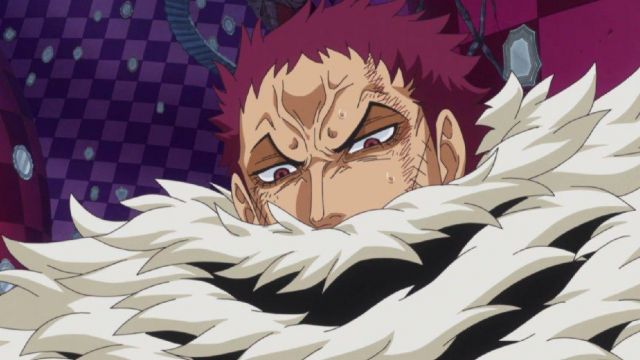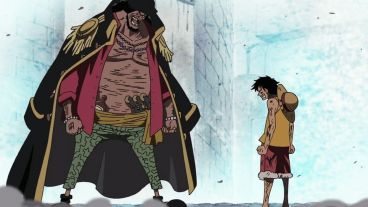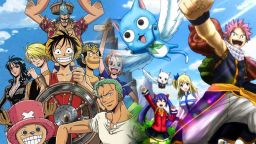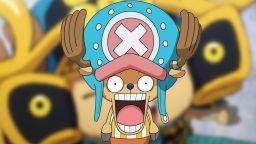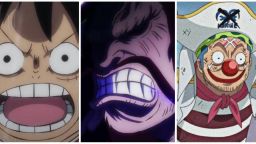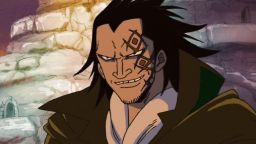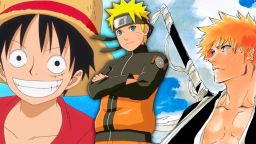One Piece has a truly massive cast of shonen-style characters, which means that inevitably, some of these characters, heroes and villains alike, will have roughly similar character arcs, abilities, or personalities. That includes some intriguing parallels between protagonist Monkey D. Luffy and his villains, such as General Charlotte Katakuri, but the story doesn't always fully flesh out these similarities.
In the Whole Cake saga, Luffy's main fight was not against the Emperor Big Mom, but her top General, the sinister Charlotte Katakuri. Luffy's fight against Katakuri was long and exciting with serious implications for Luffy, and best of all, these two pirate warriors understood each other deep down. Luffy and Katakuri are like mirror images of each other, but unfortunately, One Piece's story didn't comment on this as much as it could have – or should have.
Charlotte Katakuri Was Almost Luffy's Twin
During the epic clash between Luffy and Charlotte Katakuri, which marked the climax of the Whole Cake saga, the narrative took clever yet impactful measures to establish Katakuri as Luffy's counterpart among the Big Mom pirates. Despite not holding the position of a ship captain or being the overall leader, Katakuri commanded authority as one of Big Mom's top generals, while Luffy held the role of captain on his own vessel. Their similarities extended to their fighting styles as well, with both being formidable melee warriors who relied on their fists. Katakuri utilized the stretchy power of the Mochi-Mochi Fruit to create a deceptively soft yet lethal combatant, paralleling Luffy's Gum-Gum Fruit abilities. Furthermore, like Luffy's Paramecia fruit, Katakuri's Mochi-Mochi Fruit enabled him to employ mochi in battle without fully transforming his body into it.
On a more personal level, Charlotte Katakuri shared a significant trait with Luffy—he was a big eater. However, he kept this voracious appetite concealed from his fellow Big Mom pirates. Both Luffy and Katakuri possessed the uncanny ability to devour an astonishing amount of food, their gaping mouths stretched wide in a comical fashion. While Luffy's cravings revolved around various meats, Katakuri's indulgence focused on donuts and other desserts, fitting the dessert-themed Whole Cake Island. Though Katakuri felt embarrassed by his large, fanged mouth and insatiable hunger, in stark contrast to Luffy's shameless feasting in front of others, the design similarities between these two pirates intensified the personal and intriguing nature of their duel within Brulee's mirror world. It almost felt like a clash between brothers, even though One Piece's narrative didn't officially declare it as such.
Charlotte Katakuri Didn't Reach His Thematic Potential As Luffy's Counterpart
The design and role of Charlotte Katakuri within the Big Mom pirate crew initially hinted at a potential sympathetic connection with Monkey D. Luffy, and vice versa, due to their numerous parallels. However, One Piece's story failed to fully explore and capitalize on these similarities. While astute readers/viewers may pick up on these parallels, they are currently presented more as obvious gags rather than integral aspects of Katakuri's character design. The "big eater" trope associated with Katakuri served primarily for comedic effect, subverting viewers' expectations about his hidden mouth. Similarly, his Mochi-Mochi Fruit powers appeared to be primarily a means to align with the dessert-themed fighting style of Whole Cake Island. While entertaining to watch, this approach feels somewhat lacking and disappointing, given One Piece's typically high standards for character writing.
Charlotte Katakuri deserved to be more than just a formidable opponent for Luffy who shares a love for food. Even though the Whole Cake saga encompassed a vast array of characters, including other leaders within the Big Mom pirate crew, Katakuri should have been given a few lines of dialogue or perhaps an entire scene or flashback where he acknowledges the similarities between himself and Luffy. Both characters undoubtedly noticed the parallels and could have seen reflections of themselves in one another. If they had openly discussed these similarities, their fight would have felt more personal and emotionally charged.
Perhaps deep down, even the brutal Katakuri would have felt some remorse about pummeling his younger counterpart, or maybe Luffy would have expressed regret that in another life, they could have been great friends who shared a passion for martial arts and food. The "we could have been friends" trope, often heartrending and compelling in anime, could have been a poignant moment within One Piece. Unfortunately, such a moment never materialized, causing Katakuri to feel more like just another tough boss battle, akin to Hody Jones and Magellan, rather than Luffy's potential kindred spirit. By this point, fans of One Piece have grown accustomed to strong emotional connections enhancing the fights and adventures, and Charlotte Katakuri missed the opportunity to fulfill that potential.
Why Anime Needs Parallels Between Heroes & Villains
Fortunately, despite One Piece's missed opportunity to emphasize the similarities between Luffy and Katakuri, the concept of "we're not so different after all" is still effectively employed in many anime and other similar narratives. This theme serves to blur the line between heroes and villains, adding depth and complexity to the story, even if they ultimately clash in battle. It reminds the characters and viewers alike that despite their contrasting personalities, powers, and goals, both heroes and villains are fundamentally human, with shared emotions, aspirations, fears, joys, and vulnerabilities. It goes beyond a simple dichotomy of good guys versus bad guys and highlights the humanity within everyone involved. This approach can be implemented even when villains have crossed certain lines and cannot be forgiven or redeemed, as exemplified by characters like Tomura Shigaraki in My Hero Academia or the Six Paths of Pain in Naruto.
One Piece and other Shonen titles effectively utilize this theme to create truly memorable fights and dialogues, with ample room for more exploration. In One Piece, for instance, Luffy finds common ground with Marshall D. Teach, also known as Captain Blackbeard, on Jaya Island. Both characters strongly believe in the power of dreams in the era of piracy, a heartfelt sentiment that propels them towards greatness. Similarly, in Demon Slayer, the villainous Gyutaro, Upper Moon 6, sees a reflection of himself in Tanjiro as a protective older brother willing to do anything for his younger sister. Despite Gyutaro mostly using it to mock Tanjiro and subsequently beating him mercilessly, the two characters share an understanding that is acknowledged. Charlotte Katakuri could have greatly benefited from a similar correlation with Luffy during their fight, even if they continued to pummel each other relentlessly throughout the encounter.
